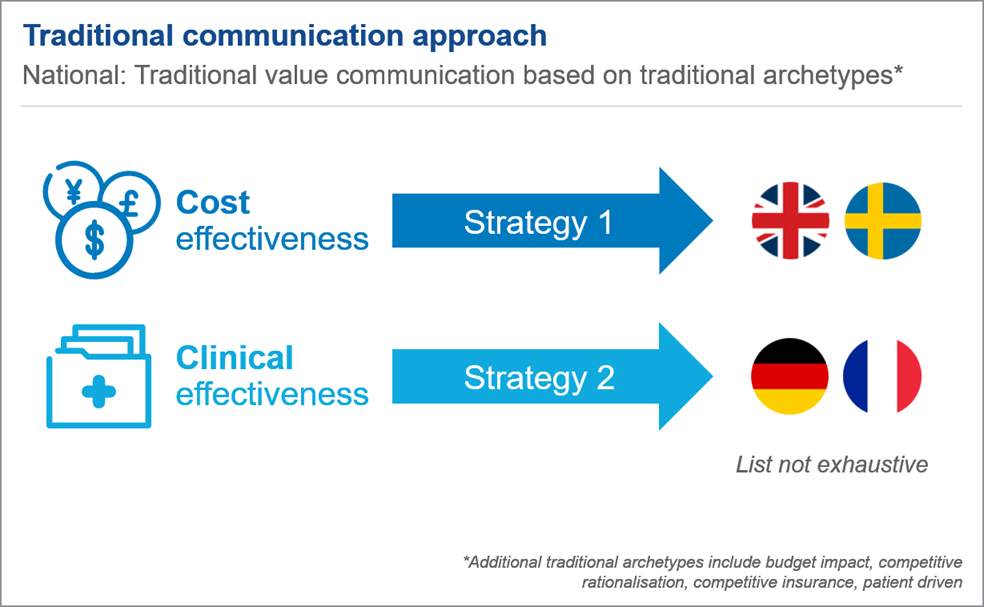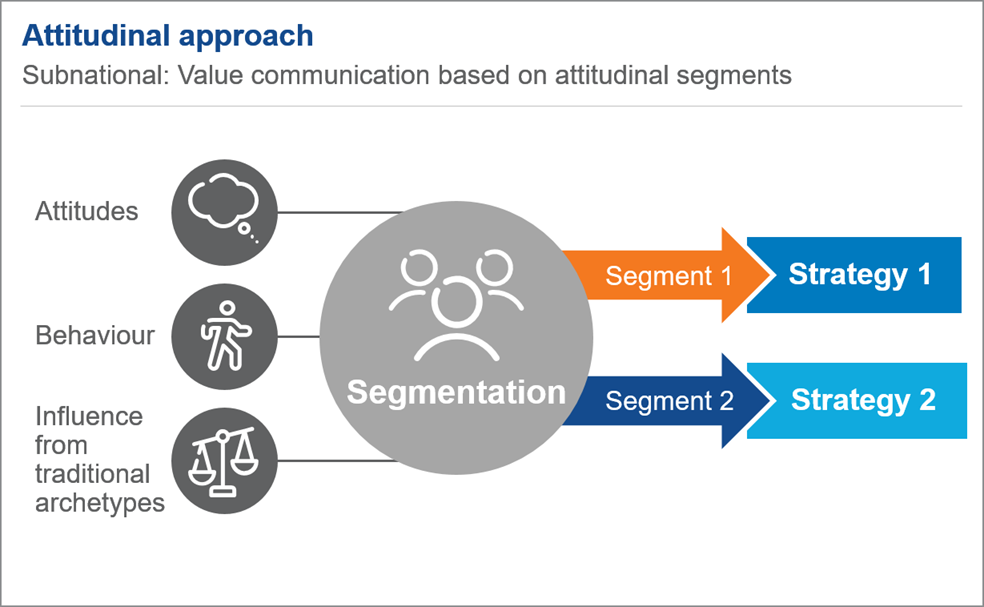How to improve payer engagement with tailored value communication
Authored by: Cecilie Alstad
Published in Pharmaphorum Deep Dive
Pharmaceutical drug success rests on being able to achieve market access. Brands are facing increasing pressure to demonstrate strong value propositions in increasingly crowded therapeutic areas. However, value can mean different things to different payers. In this article, Cecilie Alstad, Senior Analyst, discusses how an approach established in the world of marketing and commercial strategy could be the key to significantly improving pharma’s payer engagement.
Traditional payer archetyping is no longer enough
Evidence of a product’s value is today’s currency for gaining market access and value must be demonstrated to a wide audience including payers, healthcare professionals (HCPs) and patients.
While clinical trials are often designed with regulators in mind, and the efficacy and safety data they generate may be sufficient to obtain regulatory approval, this data alone is rarely sufficient to convince payers it is a product worth investing in. Payers do look for clinical arguments focused on efficacy and safety, similar to regulators. However, the relative importance of and preference for certain clinical endpoints and need for additional evidence, such as indirect comparisons, humanistic, societal and health-economic arguments, varies between different payers.
Variations in evidence requirements can be seen both across markets and HTA bodies, and between national and subnational payers. Their evidence requirements rarely align to those generated by the clinical trial itself, with choice of comparator and even primary endpoints subject to scrutiny.
Preference for certain evidence also evolves, which is the case with quality of life (QoL) data and other patient reported outcomes (PROs). We see variation across payer channels and therapeutic areas in terms of how payers are adapting to patient-centred data and the weight they give to QoL and PROs during decision-making.
To aid understanding of national payer management principles and capture differences in what they consider important in their value-assessments, pharma can apply the concept of traditional payer archetyping. Traditional archetypes are particularly useful to tailor health-economic evidence, e.g. is payer decision-making driven mainly by cost-effectiveness like the UK’s NICE, therapeutic referencing like Germany’s G-BA or budget impact like payers in Spain.

However, sub-national payer principles often deviate from the traditional archetypes. As we see such variation in payer management principles at national level, we can assume even bigger differences at sub-national level, where the quantity of payers and variation in payer roles are much greater.
This calls for a need to establish tools and frameworks that can support pharma in their transition towards value-based discussions with payers, particularly when it comes to access to treatments that are primarily driven by sub-national differentiation and decision-making.
Tailoring the value proposition for more meaningful discussions
Segmentation of HCPs and patients based on their attitudes is already well established in healthcare commercial strategy and marketing. It allows commercial teams to identify inflection points that can be targeted to drive behavior change during HCP and patient engagement.
Understanding of education and awareness gaps, and individual’s attitudes and needs, is the starting point for building a customer-centric strategy that focuses on optimizing customer engagement and enhancing customer experience. Ultimately, it allows the commercial team to prioritize resources while efficiently communicating messages and delivering value added services that are tailored to HCPs’ and patients’ needs.
Attitudinal segmentation of payers adapts and evolves the approach used by commercial strategy teams to target HCPs. When seeking to understand attitudinal differences between payer segments, it is important to capture both internal and external factors influencing their decision-making, rather than solely considering external factors as in traditional archetyping.
Internal drivers such as payers’ beliefs, attitudes and concerns can provide a deeper understanding of their behavior beyond their organizational roles and responsibilities. For example, how do payers like to be engaged with by pharmaceutical companies, and what are their attitudes towards the industry? Are their concerns relating to new products driven mainly by budget, patient-outcomes or other challenges in their local environment?

In order to capture a holistic view of payer attitudes it is also important to understand how payers prefer to engage with other stakeholders, their openness to innovation and contracting, and where they look for support during decision-making. For example, when do they prefer to engage with pharma, and how willing are they to give access to innovative treatments? Furthermore, do they consult with Key Opinion Leaders, rely on national guidelines, etc. in order to make informed decisions? Additionally, as payers rarely make decisions in isolation, how do they interact with their formulary colleagues?

Understanding how payers vary across these parameters allows for the identification of leverage points that can be differentiated for each payer segment. Payers can then be targeted via the channels through which they are most likely to be receptive to engagement, and the content of a product’s value proposition can be tailored to their preferences. For example, when evaluating a new entrant to a crowded market, one payer segment may be more open to considering PROs than others who remain more focused on traditional endpoints. In that case, the value proposition can be differentiated by highlighting PRO data in the core value story to add value for payers in the first segment but excluding it for the second segment to avoid unnecessary data load.
In this way, payer segmentation facilitates a shift towards more effective value-based discussions between pharma companies and payers by putting customer relationships at the center of the communication strategy.
Segmentation can also be beneficial when it comes to negotiation tactics. One payer segment may only be interested in financial-based agreements, while another may see value in additional services. Understanding this allows the manner of entering negotiations with each segment to be differentiated and limited resources to be prioritized by only offering additional value to the second segment.

A key difference to segmentation in the HCP and patient context is the feasibility of large samples for robust analysis, given the limited universe of payers. Effective attitudinal payer segmentation requires advanced analytical techniques combined with informed interpretation. This must be built upon a thorough framework that captures the full range of potential internal and external factors that may potentially influence payers’ decision-making, rooted in an in-depth understanding of the market access landscape. For the segmentation to be actionable, it then needs to be possible for each payer segment to be described and identified based on a minimum number of highly predictive parameters.
Better payer engagement leads to improved market access
Attitudinal payer segmentation can support pharmaceutical market access strategy by establishing a logic of heterogeneity among payers and providing a framework that enables pharma companies to navigate that diversity. Effective application can support an access strategy that meets the requirements of a broad payer audience while strengthening the customer relationship with each payer.
Although efficacy, safety and cost will inevitably remain at the forefront of value communication to payers, today’s increasingly challenging access environments call for a need to re-think how the nuances of this communication can be tailored to attitudinal preferences in order to secure access opportunities and ultimately better meet patients’ needs.

Sign up to receive Rapport.
Rapport is our monthly newsletter where we share our latest expertise and experience.